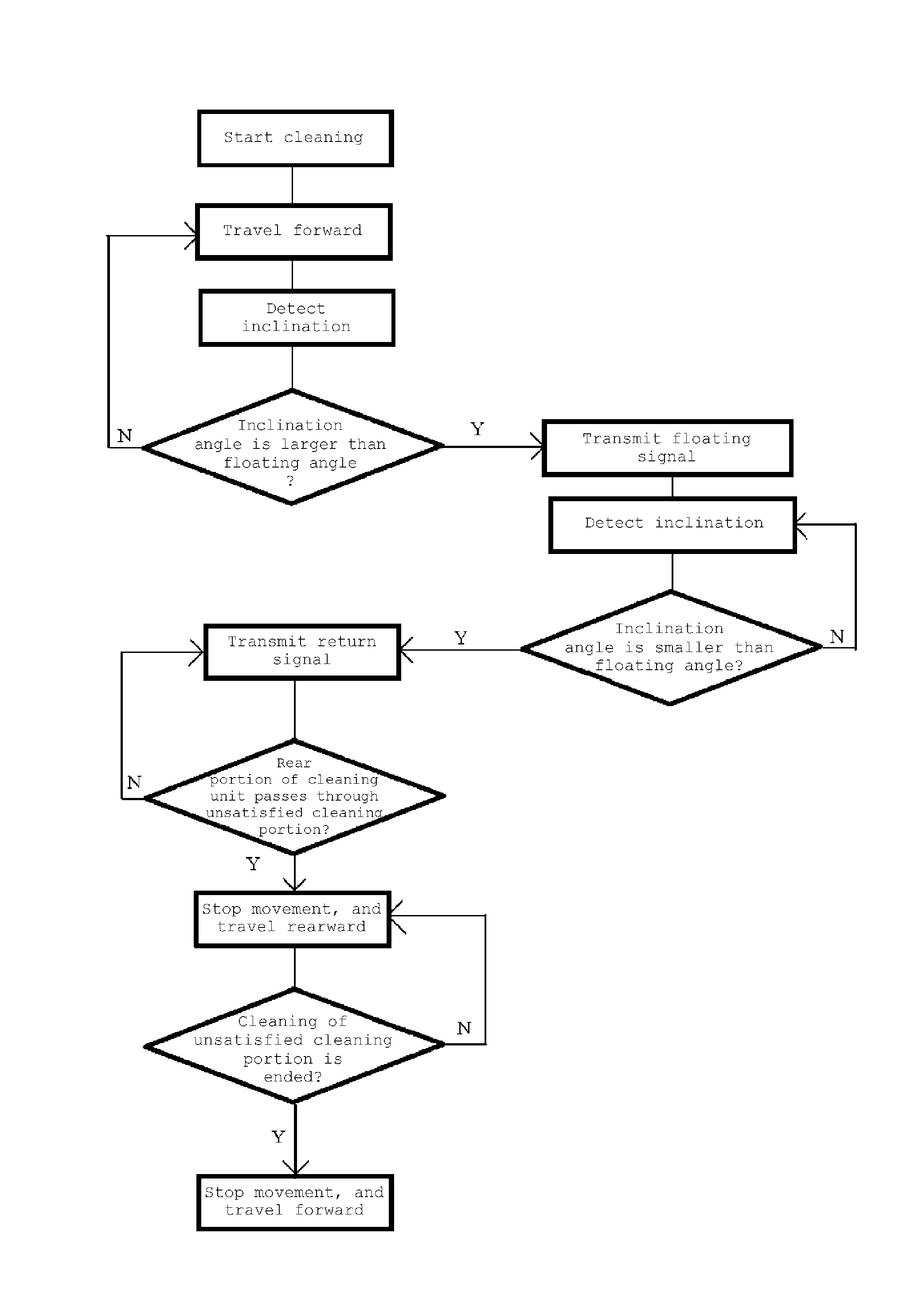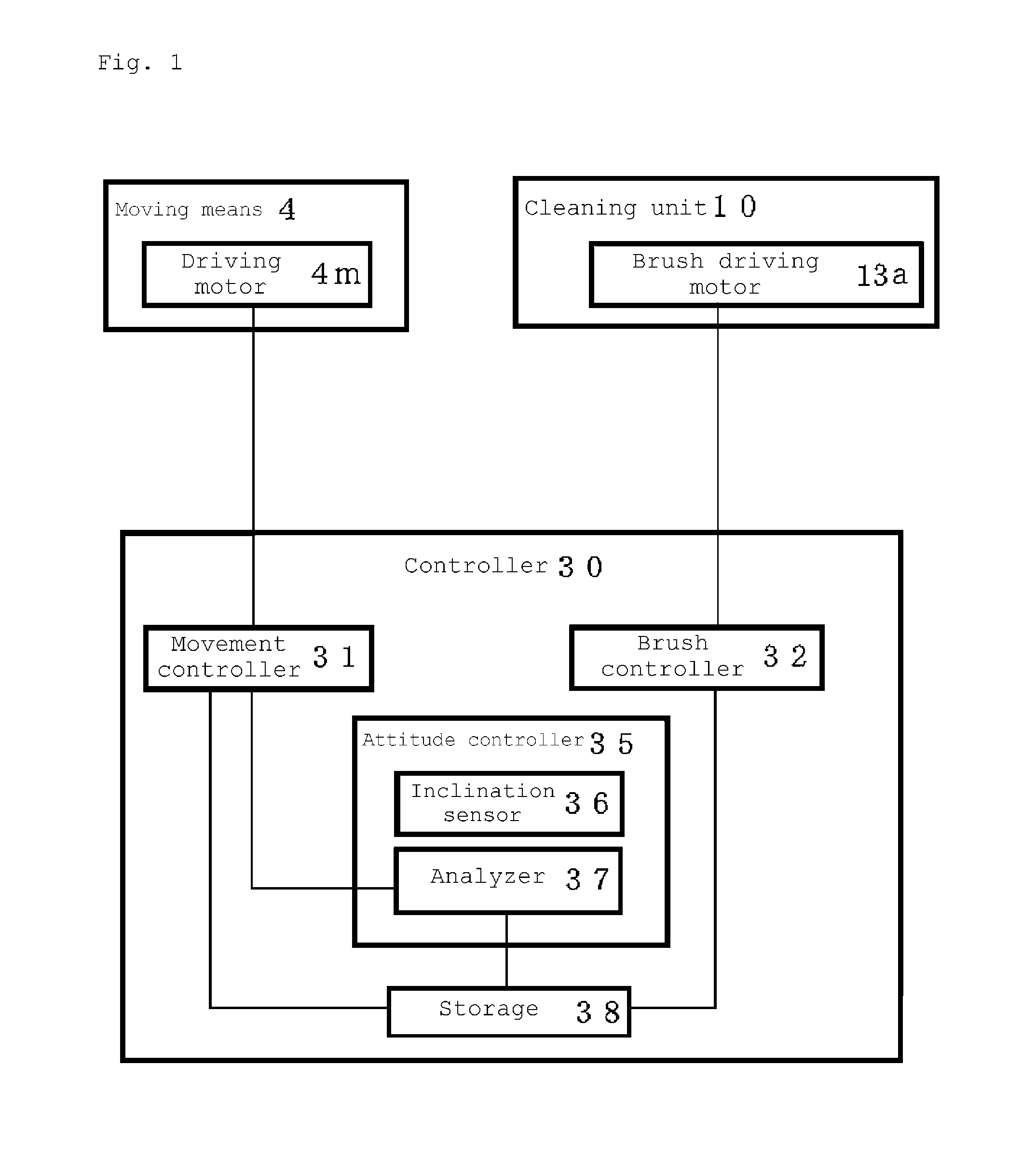Autonomous-travel cleaning robot
a cleaning robot and autonomous technology, applied in carpet cleaners, distance measurement, instruments, etc., can solve the problems of reducing and affecting the cleaning effect of the solar cell array, so as to reduce the time necessary for cleaning work, suppress the cost necessary, and improve work efficiency
- Summary
- Abstract
- Description
- Claims
- Application Information
AI Technical Summary
Benefits of technology
Problems solved by technology
Method used
Image
Examples
Embodiment Construction
[0107]In some of the solar cell modules of the solar power generation or the condensing mirrors of the solar thermal power generation, the inclination changes in order to maintain power generation efficiency at a high level (see FIG. 10). In the case that the self-propelled cleaning robot 1 cleans the light receiving surface of the solar cell module or condensing mirror in which the inclination changes, the following control can be performed when the controller 30 can understand the inclination angle of the light receiving surface or the change in inclination angle.
[0108]There is no particular limitation to a method in which the controller 30 understands the inclination angle of the light receiving surface of the solar cell module or condensing mirror or the change in inclination angle. For example, a signal regarding the inclination angle of the light receiving surface of the solar cell module or condensing mirror is transmitted to the controller 30 from the outside (such as a cont...
PUM
 Login to View More
Login to View More Abstract
Description
Claims
Application Information
 Login to View More
Login to View More - R&D
- Intellectual Property
- Life Sciences
- Materials
- Tech Scout
- Unparalleled Data Quality
- Higher Quality Content
- 60% Fewer Hallucinations
Browse by: Latest US Patents, China's latest patents, Technical Efficacy Thesaurus, Application Domain, Technology Topic, Popular Technical Reports.
© 2025 PatSnap. All rights reserved.Legal|Privacy policy|Modern Slavery Act Transparency Statement|Sitemap|About US| Contact US: help@patsnap.com



